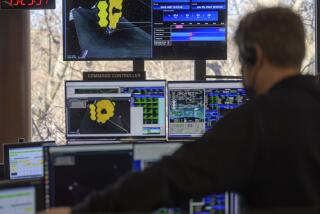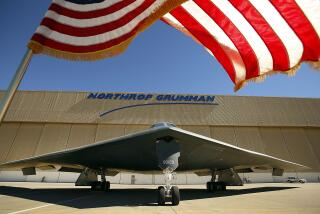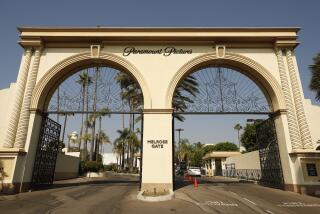Northrop Plans Rapid Integration in Litton Merger
- Share via
Northrop Grumman Corp. has been one of the more active players in the defense industry’s consolidation since the early 1990s, buying 12 companies, including aircraft maker Grumman for $2.1 billion and Westinghouse Electric Co.’s defense electronics business for $2.9 billion.
By all accounts the acquisitions were completed without a major hitch, a feat that few in the defense industry can claim, and now Northrop executives are hoping for a similar outcome as it digests its biggest purchase so far, the $3.8-billion takeover of Litton Industries.
Litton formally became a part of Northrop last week, bringing together two of Southern California’s storied aerospace concerns and creating one of the nation’s largest defense contractors, with 80,000 employees in 44 states and 25 countries.
Analysts said that if Grumman and Westinghouse--two of the largest defense deals at the time--are any indication, integrating Litton is likely to be swift and decisive.
“They both went very smoothly compared to some of the others,” said Paul H. Nisbet, senior aerospace analyst for JSA Research Inc. of Newport, R.I. “I don’t think they’ll have any problems with integrating Litton.”
Still, with Wall Street closely watching the acquisition for any hiccups, Northrop vowed to move quickly to combine the companies in a time frame that is significantly shorter than that of most large mergers.
Saying it wants to avoid the indecision and malaise that has hurt other large aerospace deals, Northrop plans to complete a review of Litton businesses within 60 days and have the companies fully integrated by the end of the year.
“We have done this many times before and we feel comfortable of doing this very rapidly,” Northrop Chairman Kent Kresa said, citing Northrop’s extensive merger experience.
Analysts said Northrop hasn’t faced as many challenges as others have with mergers because many of its acquisitions were companies that had very little overlap with its existing operations. That is also likely to be the case with Litton, they said.
For example, most of Litton’s defense electronics and information technology businesses appear to be more complementary than competitive with Northrop’s businesses. In a tour of Litton’s Guidance and Control Systems unit in Woodland Hills on Monday, Kresa was briefed on navigation and other equipment that had little overlap with any products that Northrop currently produces.
Even Litton’s fiber-optic listening devices used on submarines are not expected to pose any competitive problems for the ceramic listening devices made by Northrop.
Northrop is unlikely to stumble as Lockheed Corp. did in trying to integrate Martin Marietta or as Raytheon Co. did with the Hughes’ defense electronics business. In both cases, the companies shared similar technologies and products, creating a disruptive internal fight for which program would survive.
With few redundancies, layoffs are expected to be minimal, unlike other mergers such as Boeing Co.’s acquisition of McDonnell Douglas, an aircraft maker and chief competitor. Boeing slashed 6,000 jobs after merging with McDonnell.
Northrop anticipates a few hundred layoffs, mostly in administrative positions at Litton’s Woodland Hills headquarters as it is combined with Northrop’s headquarters in Century City.
“We are not going to be downsizing,” Kresa said. “This is a growth business.”
Still, significant challenges remain in organizing and managing the combined businesses, analysts said. Particularly complex will be melding Northrop’s and Litton’s information technology businesses. Together, the new entity becomes the largest provider of computer networking and programming for the government. Northrop’s Logicon unit, for example, manages the White House Internet site.
“Northrop will need to pull together diverse operational units to look at future business opportunities with one voice,” said Jon B. Kutler, president of Quarterdeck Investment Partners Inc., an aerospace industry investment bank in Century City. “It’s a very fragmented business and there is an opportunity for Northrop to play a leadership role.”
With the Litton deal, Northrop becomes one of the Navy’s largest shipbuilders. Though it remains a player in the aircraft business, it has moved away from large-scale assembly to a focus on avionics.
Northrop has incurred significant debt in making the deals, which it needs to pay down if it wants to maintain good credit ratings and make further acquisitions. The debt-to-capital ratio doubled to 60% with the purchase of Litton.
Northrop could reduce its debt by selling non-core businesses such Litton’s commercial electronics unit, whose product line includes circuit boards and life-support machines for hospitals, analysts said. The unit generates $700 million in revenue annually.
“The question is what are they going to do with commercial electronics and materials,” Nisbet said, adding that the business could fetch about $1 billion. “I won’t be surprised if they sell it.”
But Kresa has maintained that the debt can be paid down with cash generated from existing operations. Besides, the commercial electronics business, which has seen 20% annual growth and generates high profit margins, could help leverage future downturns in defense contracts.
“They’ve [Litton] got a lot of high-margin businesses and some very exciting technology, and that’s of great interest to Kent Kresa,” a Northrop spokeswoman said.
More to Read
Inside the business of entertainment
The Wide Shot brings you news, analysis and insights on everything from streaming wars to production — and what it all means for the future.
You may occasionally receive promotional content from the Los Angeles Times.










